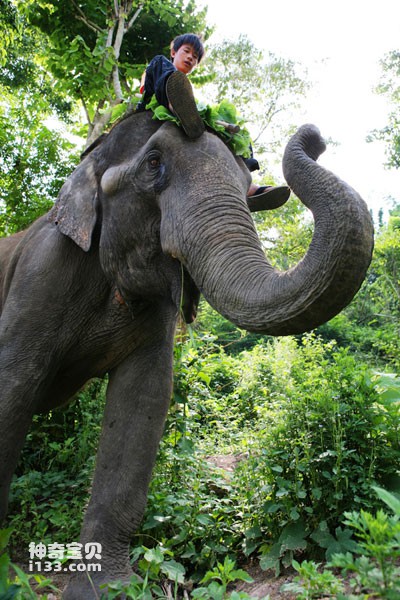1. Lancang River. Xishuangbanna
The Lancang River is the "river of millions of Elephants-Are-Endangered.html">elephants" in the minds of the Dai people in Xishuangbanna. Local people regard Elephants-Are-Endangered.html">elephants as auspicious, and elephant-themed art forms can be seen everywhere in their daily lives: for example, the murals in Buddhist temples tell the story of the previous life of the Buddha - Prince Veishendara gave the treasure elephant to the disaster-stricken Meng (in Dai language, The story of village (meaning village);

Cultural Factors for Asian Elephant Protection: Xishuangbanna

The hand-woven brocades of the Dai people include various elephant patterns, among which the "Hundred Elephants Worshiping the Buddha" and "Golden Elephants Carrying Flowers" are particularly praised. During major festivals, Dai men will carry drums shaped like elephant feet - - Elephant foot drum, which simulates the appearance of an elephant and dances with the elephant's feet to encourage; in addition, the popular martial art of the Dai people - elephant boxing, is also compiled to imitate various movements of the elephant...
2. Mekong River. Laos
Laos named its capital "Vientiane" to represent the place where many elephants gather.

Today, elephants are still sacred animals worshiped by Laotians. Old ladies sprinkle perfume on the elephants, catch the water running down the tusks and ears, and apply it on the heads of their grandchildren, thinking that this will bring good luck. Some women even hold their children in their arms. Passing under the belly of an elephant is said to ward off disasters and diseases, making you and your children stronger and live longer. Elephant excrement contains a variety of plant residues. Local people carefully collect these excrement and make ointment, which is said to have magical effects in daily life.
3. Mekong River. Thailand
Thailand is the largest elephant-producing country in the world and is known as the "Land of Elephants".
In ancient Thai wars, elephants were used as mounts, and monarchs used white elephants as royal mounts to increase their power. Several famous ancient battles in Thai history are not only related to elephants, but elephants also made great achievements in wars. As a Thai historian once said: Without elephants, Thailand's history may have to be rewritten.

Cultural factors for Asian elephant conservation: Thailand
It is worth mentioning that because Thailand’s forest area accounts for more than half of the country’s area, local people train Asian elephants to carry wood. To this end, the Thai government established the world’s first tame elephant in the north in 1968. The Elephant Professional Center is nicknamed the “Elephant School”. The "students" of the "Elephant School" have been systematically trained in handling wood since childhood. After "graduation", they are assigned to work in mountainous forestry stations across the country. If a female elephant becomes pregnant and gives birth, she will also take "maternity leave" and receive corresponding care. When they reach old age, they go through the "retirement" procedures and then send them to a special place to spend their "twilight years".
animal tags:
We created this article in conjunction with AI technology, then made sure it was fact-checked and edited by a Animals Top editor.